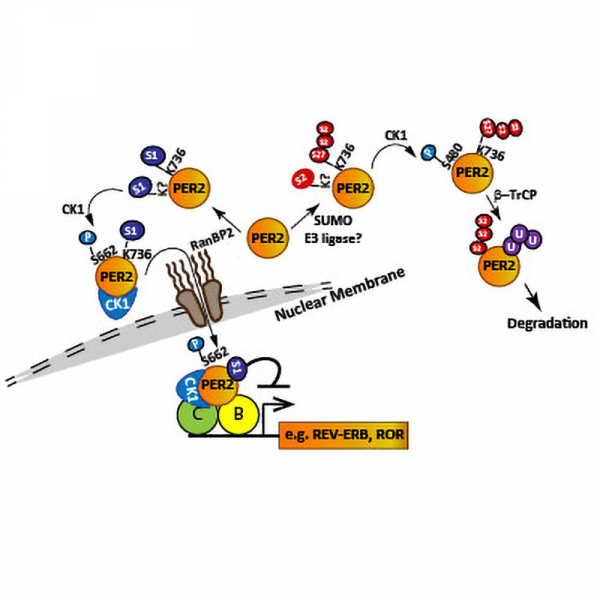Differential effects of SUMO1 and SUMO2 on circadian protein PER2 stability and function

Wendy W. Hwang-Verslues
Scientific Reports
July 13, 2021
Posttranslational modification (PTM) of core circadian clock proteins, including Period2 (PER2), is required for proper circadian regulation. PER2 function is regulated by casein kinase 1 (CK1)-mediated phosphorylation and ubiquitination but little is known about other PER2 PTMs or their interaction with PER2 phosphorylation. We found that PER2 can be SUMOylated by both SUMO1 and SUMO2; however, SUMO1 versus SUMO2 conjugation had different effects on PER2 turnover and transcriptional suppressor function. SUMO2 conjugation facilitated PER2 interaction with β-TrCP leading to PER2 proteasomal degradation. In contrast, SUMO1 conjugation, mediated by E3 SUMO-protein ligase RanBP2, enhanced CK1-mediated PER2 S662 phosphorylation, inhibited PER2 degradation and increased PER2 transcriptional suppressor function. PER2 K736 was critical for both SUMO1- and SUMO2-conjugation. A PER2 K736R mutation was sufficient to alter PER2 protein oscillation and reduce PER2-mediated transcriptional suppression. Together, our data revealed that SUMO1 versus SUMO2 conjugation acts as a determinant of PER2 stability and function and thereby affects the circadian regulatory system and the expression of clock-controlled genes.


